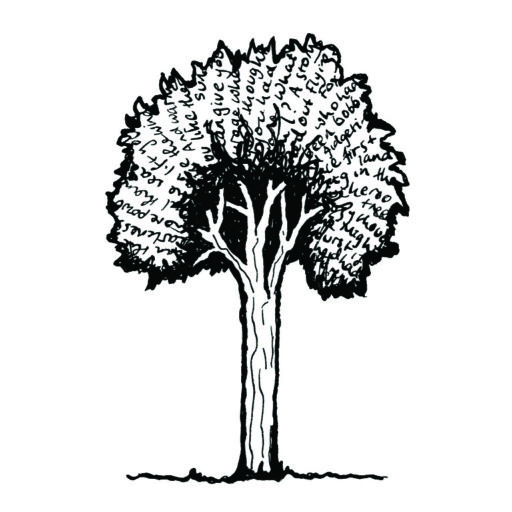21st February 2022, 6 pm
The light is fading, and the wet stems of Ribbony Gums and Snow Gums are dark grey against a white overcast sky. The bare sloping rock face shines with water, water is sponged up by the verdant green mosses, and it saturates some fire-scorched tree trunks into an even deeper, inky black. Water, water, is everywhere, as gentle drizzle sprinkles the volcanic landscape of Mount Kaputar. It’s perfect weather for slugs.

And against the dull greys and greens they are easy to spot: slashes and strips of bright pink moving slowly over the rocks and tree trunks, scraping up microscopic plants with their toothy tongues, leaving knobbly trails.


The Kaputar Pink Slug (Triboniophoris nov “Kaputar”) is only found at Mount Kaputar, northern New South Wales, and is one of the most amazing Australian native animals I have ever seen. Partly because of its size (the adults are about 14 cm long) and partly because of the outrageously bright pink colour of the adults (the juveniles are a more circumspect browny-pink colour). The Australian bush, especially in the more southern latitudes, tends to be shy with subdued colours: leaves tend to be olive-green, blue-green and grey-green; grasses are only bright green for a brief damp window of growth and then they persist as dry bleached straw colours for longer; tree bark is quickly sun-faded into greys, buffs and light browns, and most wildflowers are small and inconspicuous. Yes the colours of some Australian birds are bright in their fleetingness. But a huge, slow-moving, hot pink slug? It seems like such an anomaly in this landscape of gentle hues.

But I look closer, and the choice of colour by the slug is perhaps not such a mystery. All around are fallen eucalypt leaves, many in shades of pinky-red similar to the slugs:



I’m not sure if these leaves are from the Ribbony Gum (Eucalyptus viminalis), Snow Gum (E. pauciflora) or even the Mountain Gum (E. dalrympleana) which also grows here. Maybe the leaves of all three species turn this colour when they die and fall. Maybe it has something to do with the cooler temperatures at this altitude (around 1500 m). But perhaps temperature is not relevant, as the leaves of the Sydney Blue Gum (E. saligna) also turn hues of bright red where I live in Beechmont (about 600 m), which is further north, and has a generally warmer climate.

And it turns out that the Kaputar Pink Slug is only one species of a whole family of slugs (the Family Athoracophoridae or Leaf-veined Slugs) that seem to mimic leaves, presumably for camouflage. The closest relative to the Kaputar Pink Slug is the Red Triangle Slug (Triboniophorus graeffei, widespread along the east coast of Australia), which is very variable in colour and pattern. Below are just a sample of the observations of the Red Triangle Slug submitted to INaturalist:


Including a bright yellow morph recorded from Main Range National Park in southern Queensland:

This park is renowned for its subtropical rainforest, so if you’re wondering why bright yellow might be a good colour for a slug in this place, check out these fallen leaves of some common subtropical rainforest species that grow there:

But perhaps the prize for leaf-mimicking should go to a member of the Leaf-veined Slug family that is found in New Zealand Athoracophorus bitentaculatus :

I am no expert on New Zealand forests, but with the help of the lovely Raymond (who is quite a leaf expert) and the perusal of a New Zealand plant book, we were left wondering whether the leaves of the Tainui (Pomaderris apetala) could be the main inspiration for this slug? I’d love to hear the thoughts of any Kiwi readers 😊.

My recent trip to Mount Kaputar was supported by the NSW Department of Planning and Environment who have commissioned me to create an education / activity book for this wonderful place. Adam Fawcett (Chief Slug Sleuth) introduced me to the Kaputar Pink Slug and Shannon Greenfields (who first dreamed up the idea of this book) was also there to share the joy. Stay tuned for more updates about this project and the flora, fauna and ecosystems it will explore.


Further reading about these amazing slugs:
Burton, D. W. (1982) How to be sluggish. Tuatara: Volume 25, Issue 2.
Discover more from Paperbark Writer
Subscribe to get the latest posts sent to your email.

Fabulous post. Have seen the yellow Mt Mitchell ones and many of the red triangly (?) critters, but have yet to visit My Kaputar. Sounds like a wonderful project. Cheers.
Hey Robert, thank you! Mount Kaputar is a wonderland, I am sure you would love it. I never really took much time to look for Red Triangle Slugs before meeting those amazing pink ones, but all that has changed now. A trip to look for the yellow morph is certainly on the list 🙂